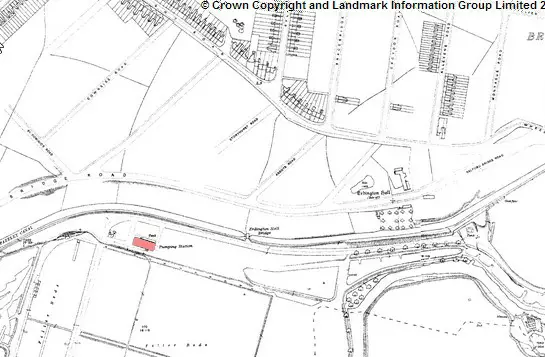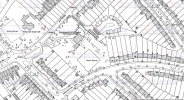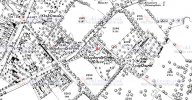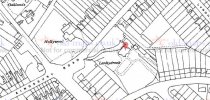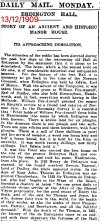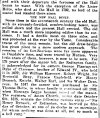-
Welcome to this forum . We are a worldwide group with a common interest in Birmingham and its history. While here, please follow a few simple rules. We ask that you respect other members, thank those who have helped you and please keep your contributions on-topic with the thread.
We do hope you enjoy your visit. BHF Admin Team
You are using an out of date browser. It may not display this or other websites correctly.
You should upgrade or use an alternative browser.
You should upgrade or use an alternative browser.
captainscarlett
Brummie babby
You live and learn,lol.
I think the aerial shot was another House Viv and not the Hall?.
Thanks Brumgum, agree. Just had another look at the details on the Britain from Above site and it definitely was another house, as the photo was taken in 1939. Looks too far away from the River too.
Thanks Mike for the Aston Furnace info. Viv.
Thanks Mike. What a fancy pumping station! Must have been a great place to work.
Found this 1695 map of churches and Erdington Hall is marked on there, I presume because of its chapel. Think it would have been pretty significant to appear on the map. Viv.
Found this 1695 map of churches and Erdington Hall is marked on there, I presume because of its chapel. Think it would have been pretty significant to appear on the map. Viv.
Attachments
Dennis Williams
Gone but not forgotten
Some bits and bobs about Mr Jennens and this lovely building....
https://birminghamhistory.co.uk/for...&page=2&p=466359&highlight=jennens#post466359
https://birminghamhistory.co.uk/for...&page=2&p=466359&highlight=jennens#post466359
captainscarlett
Brummie babby
That`s a great map,i was wondering what that building was aswell,thanks.
Just re-read this thread and there was a double moat for defence purposes according to post #7 and a chapel within the moat. So the walls in the photo post #31 must have been the moat walls. And the chapel would have been there in 1695 as shown on the map of chapels (and marked as Erdington Hall) on the map in post #28. A nice snippet of history, all sadly gone. Viv.
Last edited:
sergio walker
New Member
I understand the Walker family lived there during the 1800's
sergio walker
New Member
Erdington Hall, Gravelly Hill, Warwickshire, England near Birmingham Present Owner 1884 Reverend Lawrence Compton from the Bracebridge family, London With cousin Marianne the trip from Edgebaston by omnibus to Birmingham –the High Street Station-another omnibus took us into the country. We got off at Erdington Hall. (A photograph was sent to Marianne at Edgebarton. I brought it to Aunt Elizabeth Blessner Philadelphia for she knew the place-born and educated in England at Birmingham and Leamington at her Aunt Ann Walker’s school opened after 1812
Hi, I'm a new member and wondered if anyone could help me. I was born in a very large grand manor house in Birmingham in 1968 not privileged but my parents were the caretakers. We lived in the huge attics and was much fun as a child as when everyone left we could use the vast grounds.The building had several uses along the lines of adult education. We moved to Dorset the summer before my 8th birthday but have the chance to revisit next week. The only trouble is I can't find it on Google maps, it looks like it has been demolished and rebuilt with a new road too. Being very young when we left, I'm afraid I can't remember the name of the house, which as I recall was Elizabethan? It had stylised gables of the period and the old stables were modernised as a hall while we lived there as a community cinema and youth club. It was on Kingsbury Road (to the front, no.75) next to Marshdield Gardens and the grounds backed into Erdington Hall Road. The other side adjoined wheelright road. I walked to Ryland Road for school everyday whilst my brother went off to Jeffray's. If anyone could help me, I would be very grateful.Had a nose around on the Net, and put together a few snippets of info. It seems debatable as to where exactly the first Hall was built and the Jennen's re-build date is not 100% certain. But what a fascinating history it's had. I know the area reasonably well and never knew anything about the Hall. (I went to school in Stockland Green and it was never mentioned - a serious failing of school history lessons in my opinion which didn't seem to look too closely at local history). Anyway, back to the Hall here are the 'snippets':
Erdington Hall/Manor House
Erdington family had a fortified, double moated manor house on banks of River Tame above Bromford Bridge (1166-1441)
In 13th/14th centuries it had a chapel
There was also a mill (Bromford Mill/Forge)
According to historian Wm Hutton the family lived at the Manor in "great opulence for 400 years"
Erdington Manor house was demolished in 17th century
Either John or Humphrey Jennens built new Erdington Hall (in mid to late 1600s) and it's location was either on the site of original manor house or nearby
The Hall was a brick building with stone dressings and Dutch gables, 3 storeys and attics (in the style of building dating 1662)
Humphrey Jennens held the Hall on lease for life +21 years after his death (leased by Sir Charles Holt, Lord of Erdington manor)
The Hall was by this time part moated
Jennens became wealthy from smelting iron in Leicestershire. He now obtained land rights in Tame Valley and set up his second smelting furnace here felling trees in surrounding woods to make charcoal for smelting process. Furnace position was ideal in its proximity to Birmingham and with industrialisation demanding much iron
The Hall was enlarged in 1782
Estate also had a farm, Erdington Hall Farm, with 260 acres
1858 a farmer, William Wheelwright, lived at Hall
The Hall was still occupied in 1908, but demolished in 1912 when Tyburn Road was laid
Viv.
Hi, I was trying to trace my birthplace (1968 but left before I was 8 so don't remember details). I was born in the Elizabethan manor house at the top of Erdington Hall Road that you mentioned but don't know what it was called. Someone on the forum has said it was the Kingsbury continuation day college in 1951 but don't know what it was before that. I've looked on Google maps to visit next week but it looks like it has been demolished and rebuilt with a new road to boot would appreciate any information you have.Fascinating stuff. I was born in Erdington Hall road and I was always lead to believe Erdington Hall was at the top of this road,how wrong can you be.
Thanks for this. Do you have any other info, past or present?It looks like that it was Handsworth & Erdington Technical College (1966 map) previously named Kingsbury Continuation Day College (1951 map).
Thank you so much for getting this info. The building development that is there now has a new road running through the middle of it called shepherd's green house road, a nod to its former glory. I say new, it's new to me. I was hoping to go back and see my old house, even maybe the lady I saw to every day as a child, Gladys, that everyone said was not there! Thanks again.
Frothblower
Lubrication In Moderation
I do believe it's a domestice refuge house called Shepherd Green house. ( a new build )Hi, I was trying to trace my birthplace (1968 but left before I was 8 so don't remember details). I was born in the Elizabethan manor house at the top of Erdington Hall Road that you mentioned but don't know what it was called. Someone on the forum has said it was the Kingsbury continuation day college in 1951 but don't know what it was before that. I've looked on Google maps to visit next week but it looks like it has been demolished and rebuilt with a new road to boot would appreciate any information you have.
AlexC
proper brummie kid
Just found this page as I, too, had a great-grand-uncle working at the hall with Charles Reynolds (see Nostromo above). By the way, the council's link has been updated, and is now:
https://www.birmingham.gov.uk/info/50170/local_history/1647/erdington_local_history/2
More information sits in this thread (should they be merged?):
https://birminghamhistory.co.uk/forum/index.php?threads/erdington-hall.37942/
Edit - threads now merged
https://www.birmingham.gov.uk/info/50170/local_history/1647/erdington_local_history/2
More information sits in this thread (should they be merged?):
https://birminghamhistory.co.uk/forum/index.php?threads/erdington-hall.37942/
Edit - threads now merged
Last edited by a moderator:
Thanks Alex for updating the link - I’ve edited the post where it quotes the old link. Shall merge the two threads too. Others may be interested as there may be earlier unseen posts. Viv.
Last edited:

